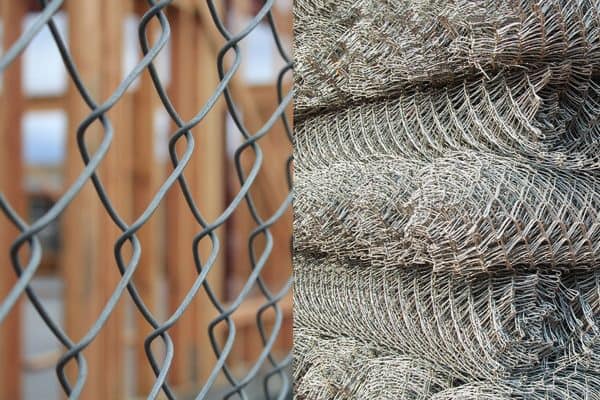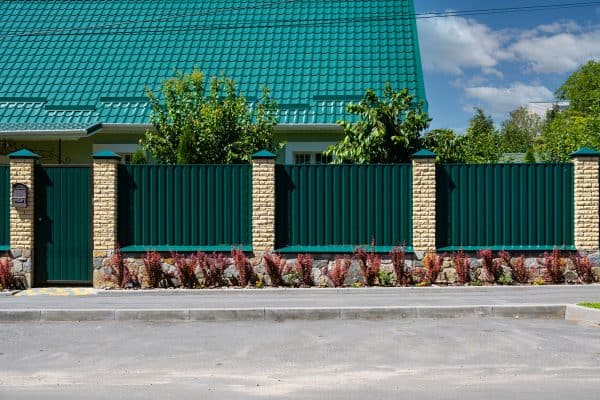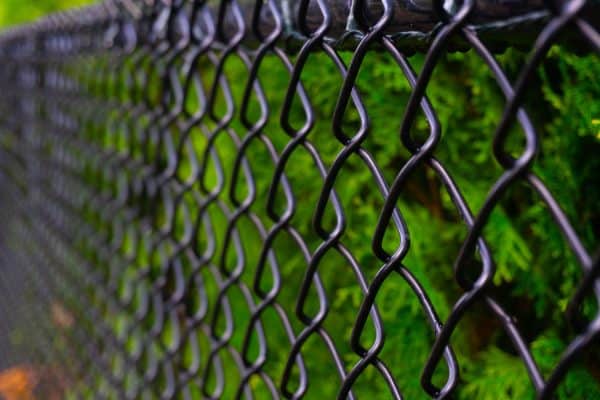Chain link fences are relatively basic and functional by design with little or no aesthetic feature. They may even present as too confining and institutional. As such, it is understandable why you would opt to hide or conceal the structure. We have researched everything you need to know so that you can begin this project in no time!
There are two main ways to hide your neighbor's chain-link fence, first, by directly adorning the framework or, second, by adding a separate barrier within your property line.
Your options depend mainly on laws and regulations that determine or define boundary issues. With your neighbor's consent, changes can be made to the fence. If that is not the case, you can find other ways to cover the said fence. This article aims to provide guidelines, alternatives, and other considerations to help you resolve the task at hand.
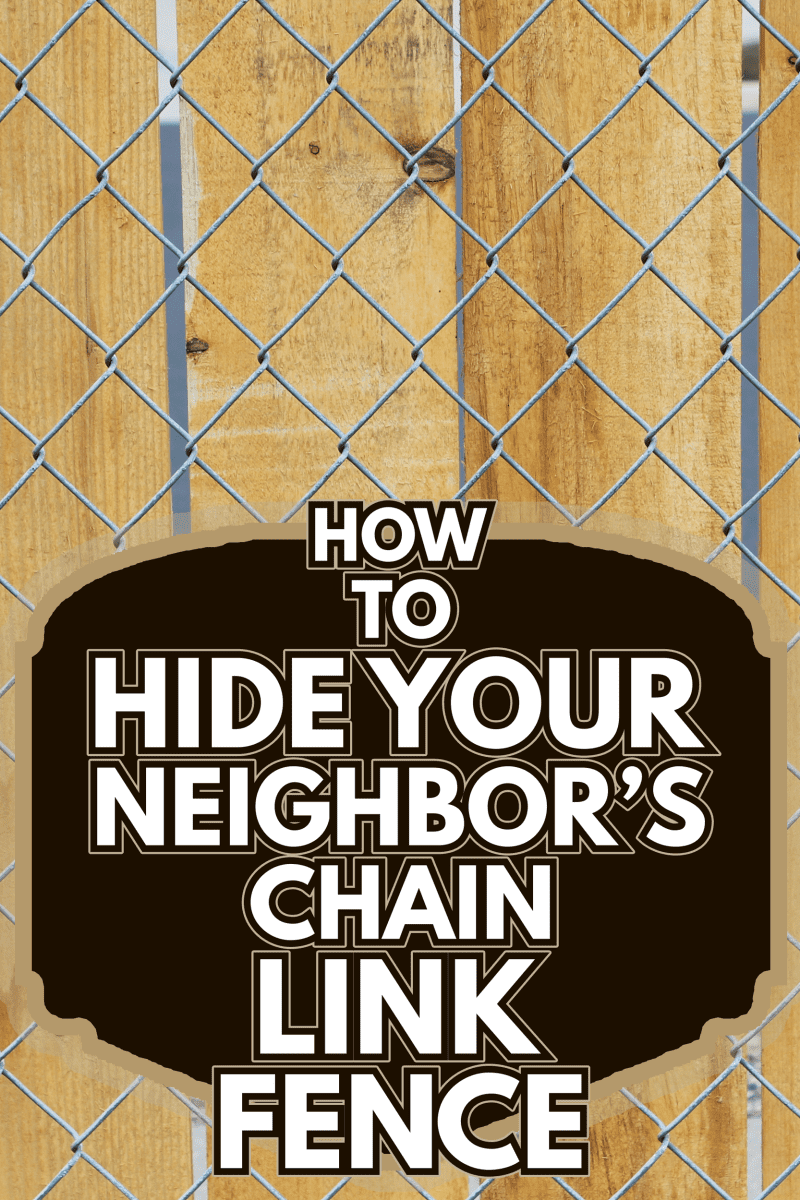
Determine The Status Of The Fence
Before we delve deeper into the topic, it is important to determine the legal status of the fence. The right to make any changes to your neighbor's enclosure would depend on legal matter, namely, their consent or agreement.
If the structure falls on a common boundary, it may be qualified as shared fencing. In which case, you can automatically exact changes on your property side of the fence.
If the delineation is entirely within your neighbor's yard, you have to find alternative ways to cover the chain-link fence.
Ways To Hide Your Neighbor's Chain-link Fence
Boundary Or Shared Fencing Options
You can use panels or boards, privacy screens or plants to cover and even enhance the appearance of an otherwise plain-looking fence.
1. Panels Or Boards

Panels or boards are the horizontal components of a fence that constitutes the facade and its general design. Attaching them would not only hide the structure but also provide privacy and better security. There are several materials you can actually consider, based on your preference, budget, and features.
Wood
Wood creates a softer, natural finish that is aesthetically pleasing. It is one of the most affordable materials on the market and easy to work on. However, it does not last as long as other materials. Wood also requires more care and maintenance, repair, and replacement.
Steel
Steel is durable, great for security, and lasts longer than other panels. It may be more expensive but is worth investing in in the long run. It provides the best privacy and strength for any fence. It may, however, be too heavy for a chain-link fence to support.
Other Materials
Other materials such as PVC, vinyl, or composite boards result in the same privacy and aesthetic effects, your main consideration relies on appearance, cost, maintenance, and durability.
Plants
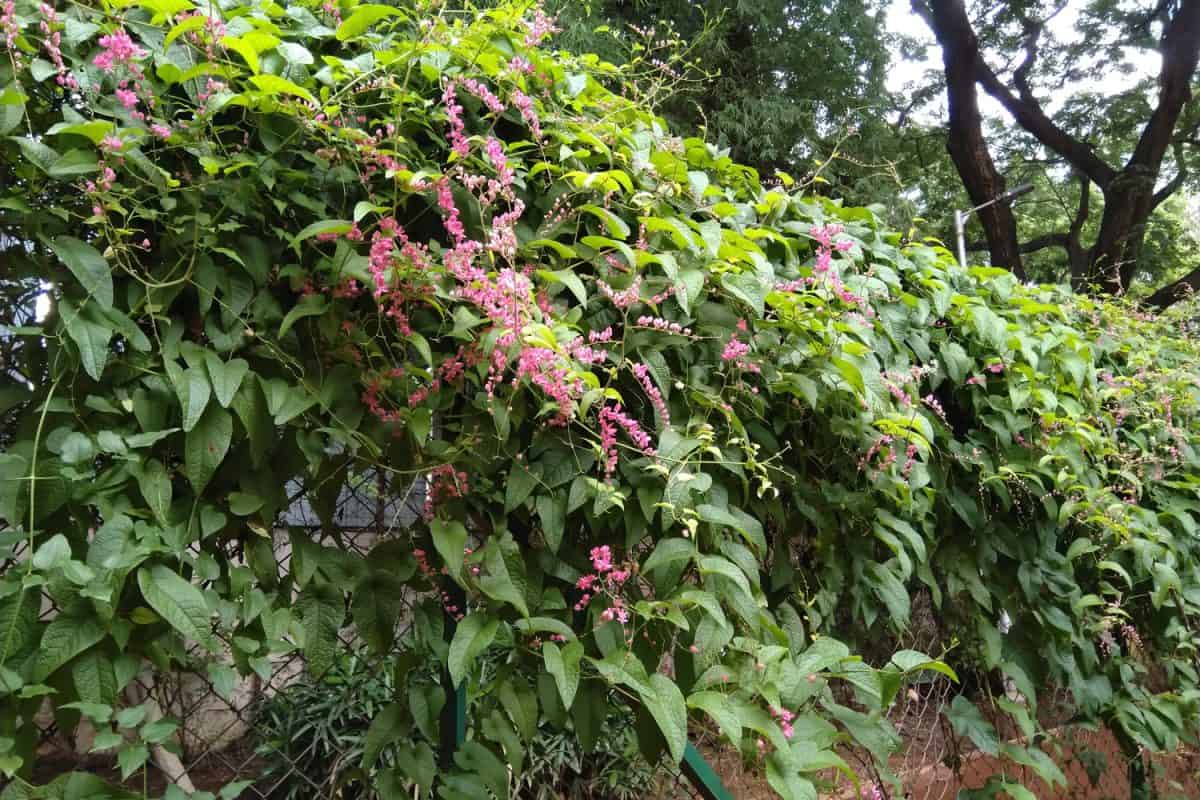
Different varieties of ivies, for example, can be grown to scale and cover the fence. Choose rapid-growing species that are easy to maintain and only require occasional trimming and pruning. Before doing this, ensure your neighbor's approval even though it is a shared fence.
You may also place potted pots or grow any kinds of trees or shrubs in order to cover the fence. This will not only provide privacy, but it will also be aesthetically pleasing.
Landscaping
You may also opt for landscaping the area. All you have to do is to combine panels or boards with plants and any other materials you may find appealing. For instance, you can use bamboo paneling to cover the chain-link fence, then adorn the area with various plants and rocks.
Privacy Screen
A privacy screen, as the name implies, improves privacy. The material is mostly square or rectangular in shape. It is placed onto one side of the fence in order to completely obstruct the view. When you use this material, the chain-link design will be covered.
2. Privacy Fence
Building your own private fence is another way to completely block your neighbor's fence. It may be costly, but it gives you the option to design the fence to whatever suits your taste.
Can I Put A Privacy Fence Up Next To My Neighbors?
Fencing laws vary depending on the state you are living in. In most cases, you are allowed to build a privacy fence next to your neighbor's as long as it is within your property line.
In some areas, you need to put up your enclosure 2 to 8 inches away from the borderline. Your fence posts are also required to be arranged in alternate positions with your neighbor's. To verify the exact guidelines, you can check local laws.
Different Kinds of Privacy Fence
Shadow-box Fences
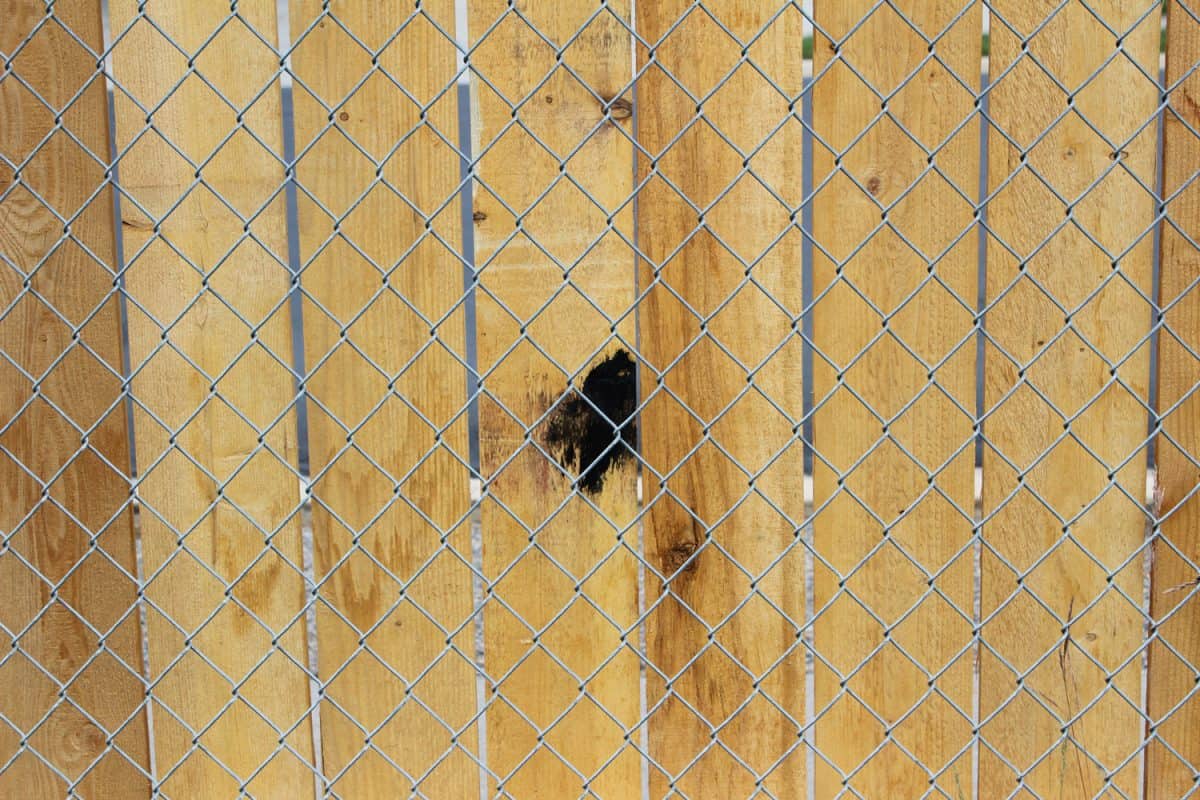
Board-on-board is the other name for this kind of privacy fence. As the name implies, the boards or pickets are placed in a staggered position on both sides of the fence. Similar to regular privacy fences, shadow-box only has less noticeable gaps.
This kind of fencing option lets in more light and offers better air circulation simply because of the way it is structured. Because the placing of the pickets is staggered, your neighbor's side of the fence will also have an aesthetic look.
Most shadow-box fences are made of wood-treated pine or cedar. It is not only aesthetically pleasing, but these types of lumber offer a durable and reliable fencing material.
Stockade
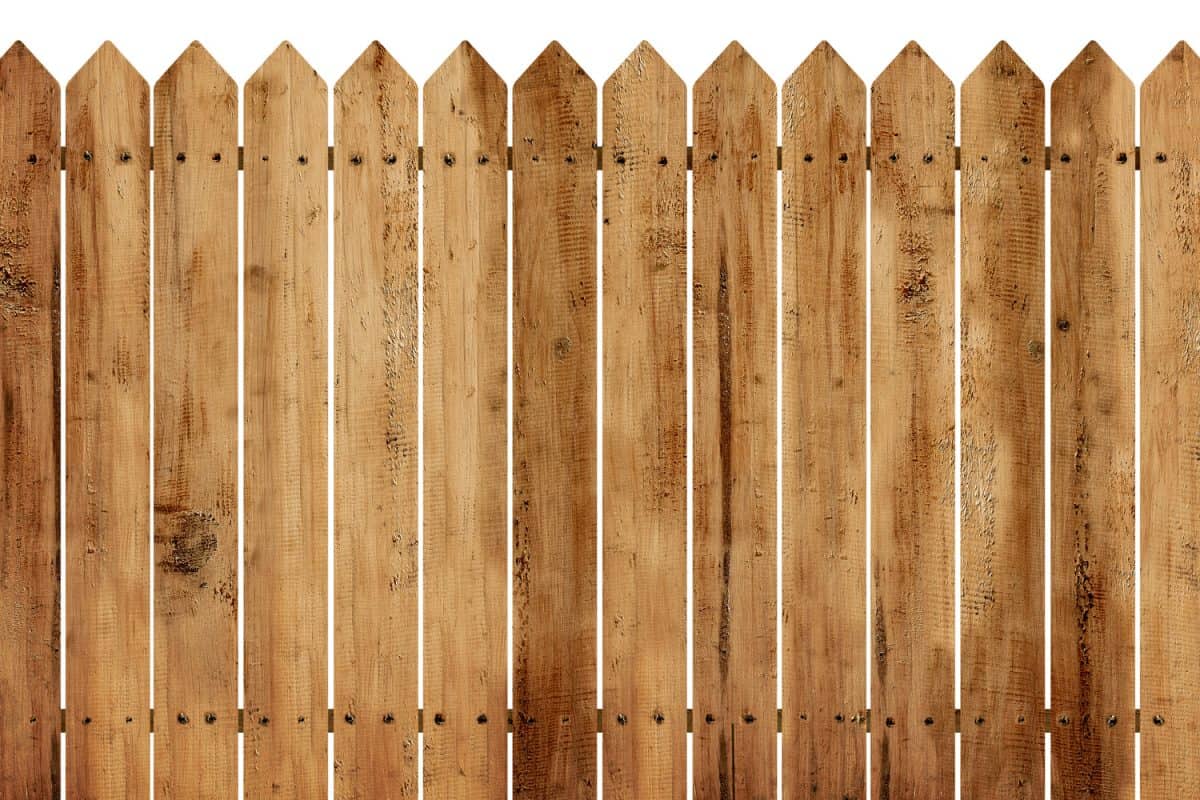
Stockade is the most common kind of privacy fence. It consists of adjoining boards, pickets, or panels without any gaps. It offers a higher privacy rating since the entire property will not be seen from the outside.
The top portion of the pickets can be designed to have pointy edges. This provides additional protection and security against fence climbers.
Lock Board
Lock board fencing is another alternative. This type of enclosure has boards that fit together in order to form a solidified structure that obstructs the view. Unlike stockade, this fence does not have any gaps which is why it blocks airflow.
Lattice Fencing
Lattice fencing is a decorative kind of privacy fence. It is made of thin slats that form an open criss-cross pattern. Various plants such as ivies, shrubs, and any other kinds of vines can be used to cover the entire fence and increase security and privacy.
Can You Attach A Privacy Fence To A Chain Link Fence?

Rules may vary in different states; however, in most cases, if the fence is owned by your neighbor, you will first have to send a letter or a request that you will want to attach a privacy fence. If you have a shared property line, you may have the right to adorn the fence with whatever material you like.
Paneling or placing a privacy screen may be the best options for a chain-link fence because they are easier to install, and they offer the best privacy. For instance, arranging bamboo pickets side by side will cover and hide the fence. Wood paneling is also relatively simple to attach.
In Closing
Chain-link fences are not considered visually appealing. This becomes an issue when your neighbor chose this kind of enclosure. However, there are several ways you can hide and improve its appearance. We hope this article proved to be helpful!
If you have found this topic informative, check out these other helpful topics:

